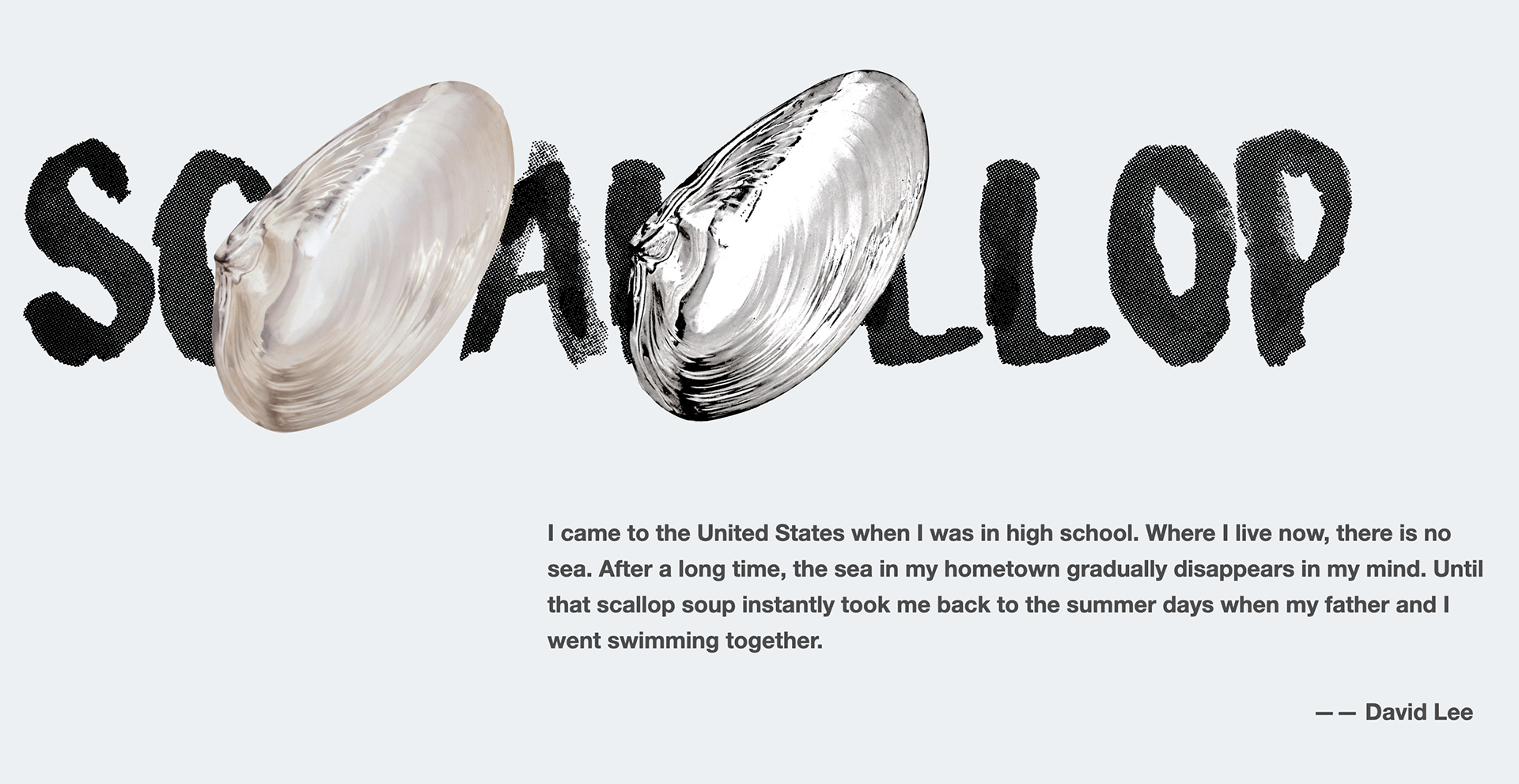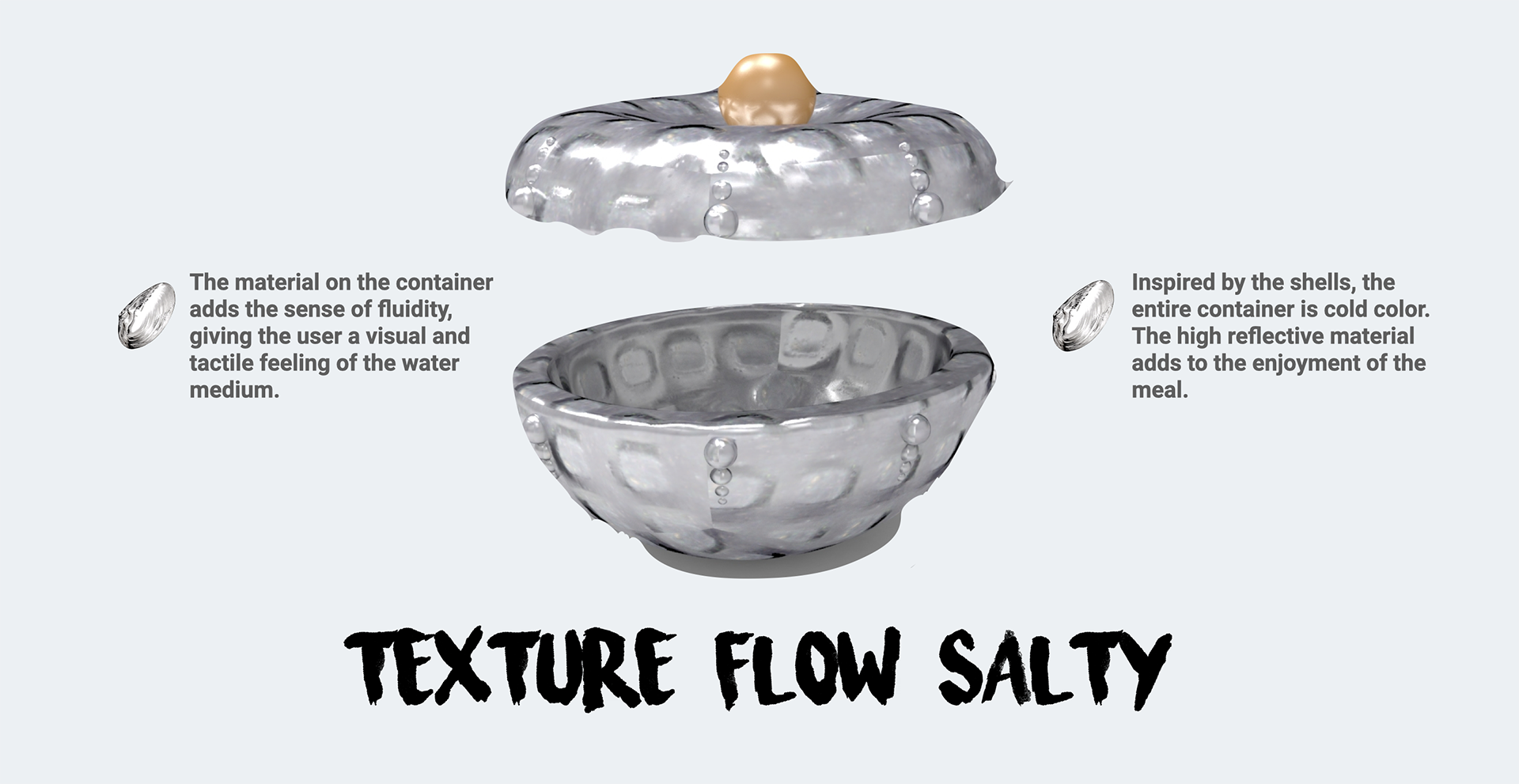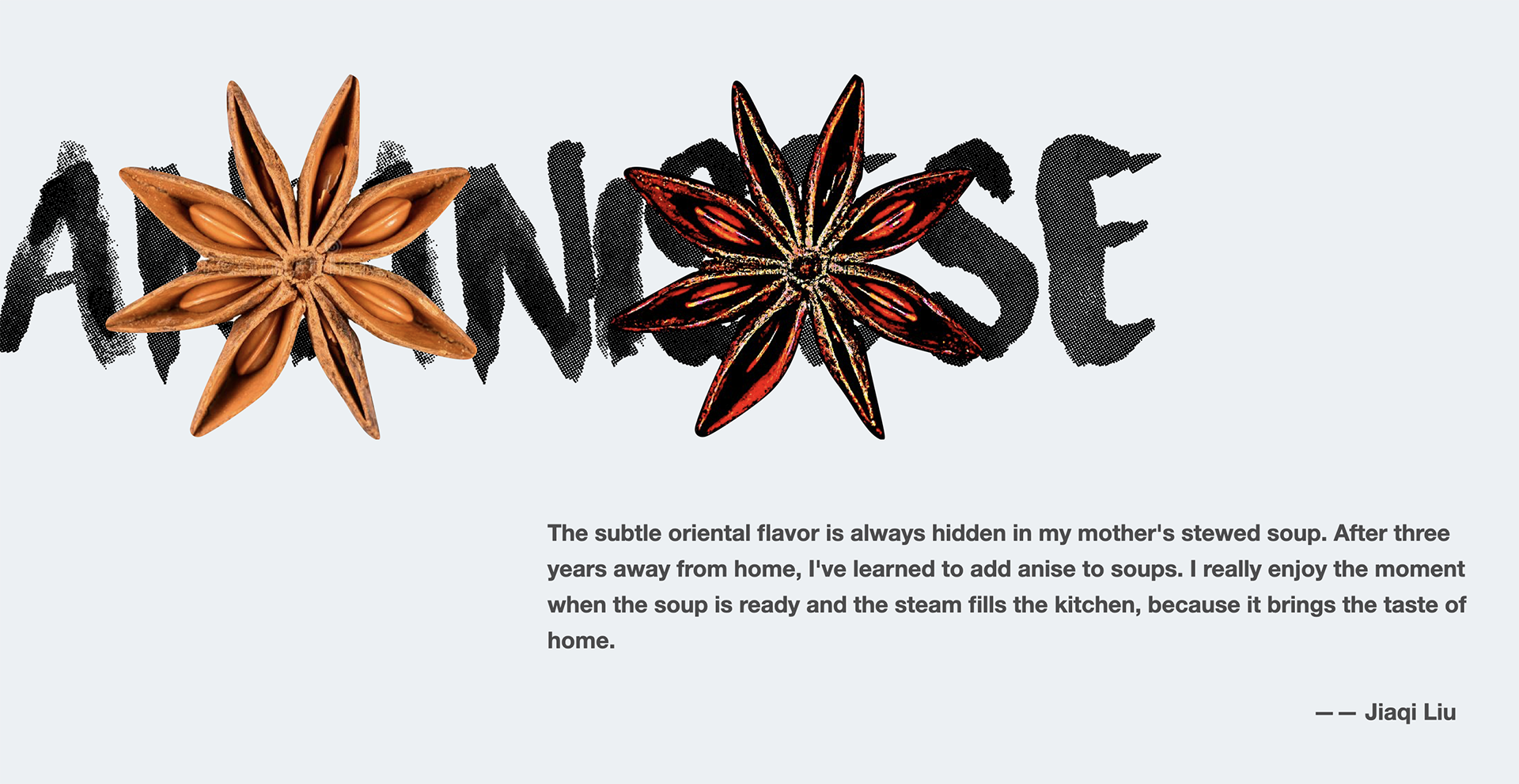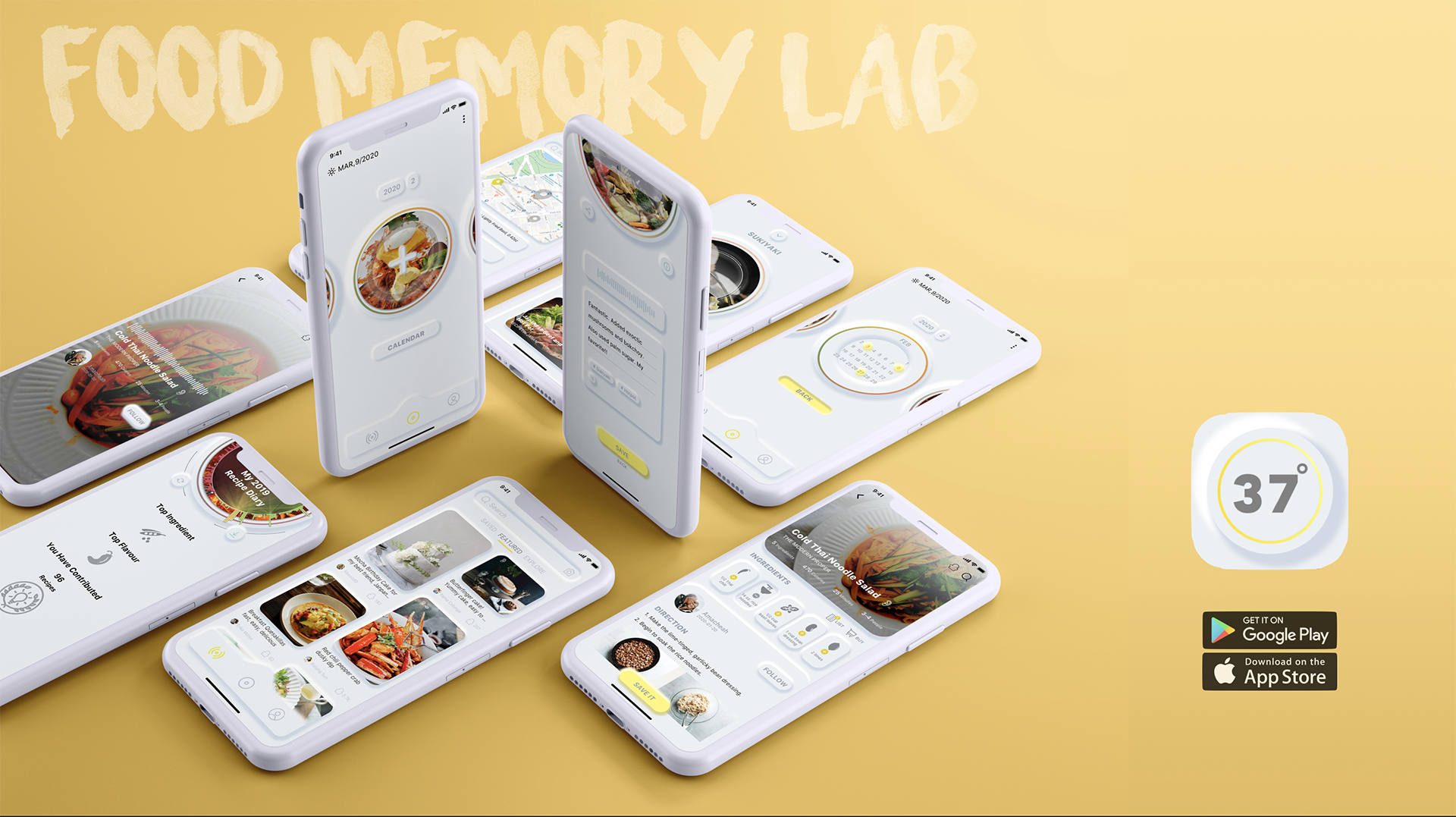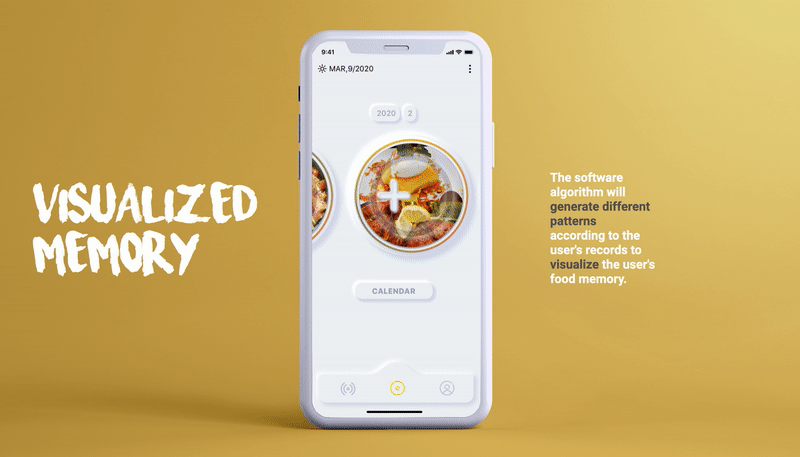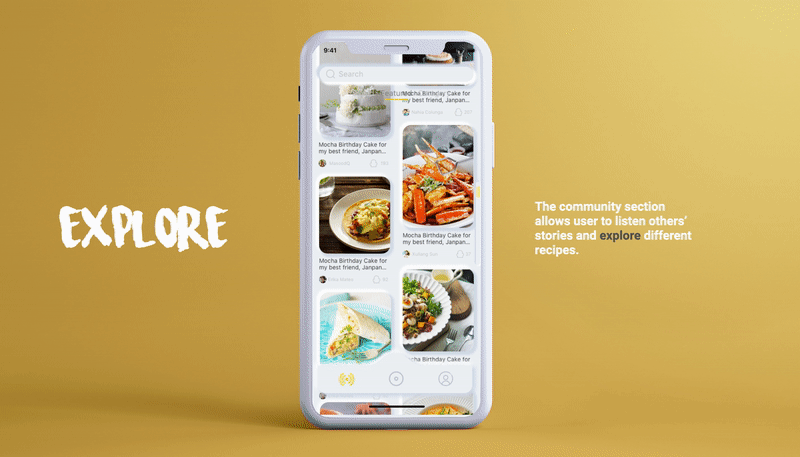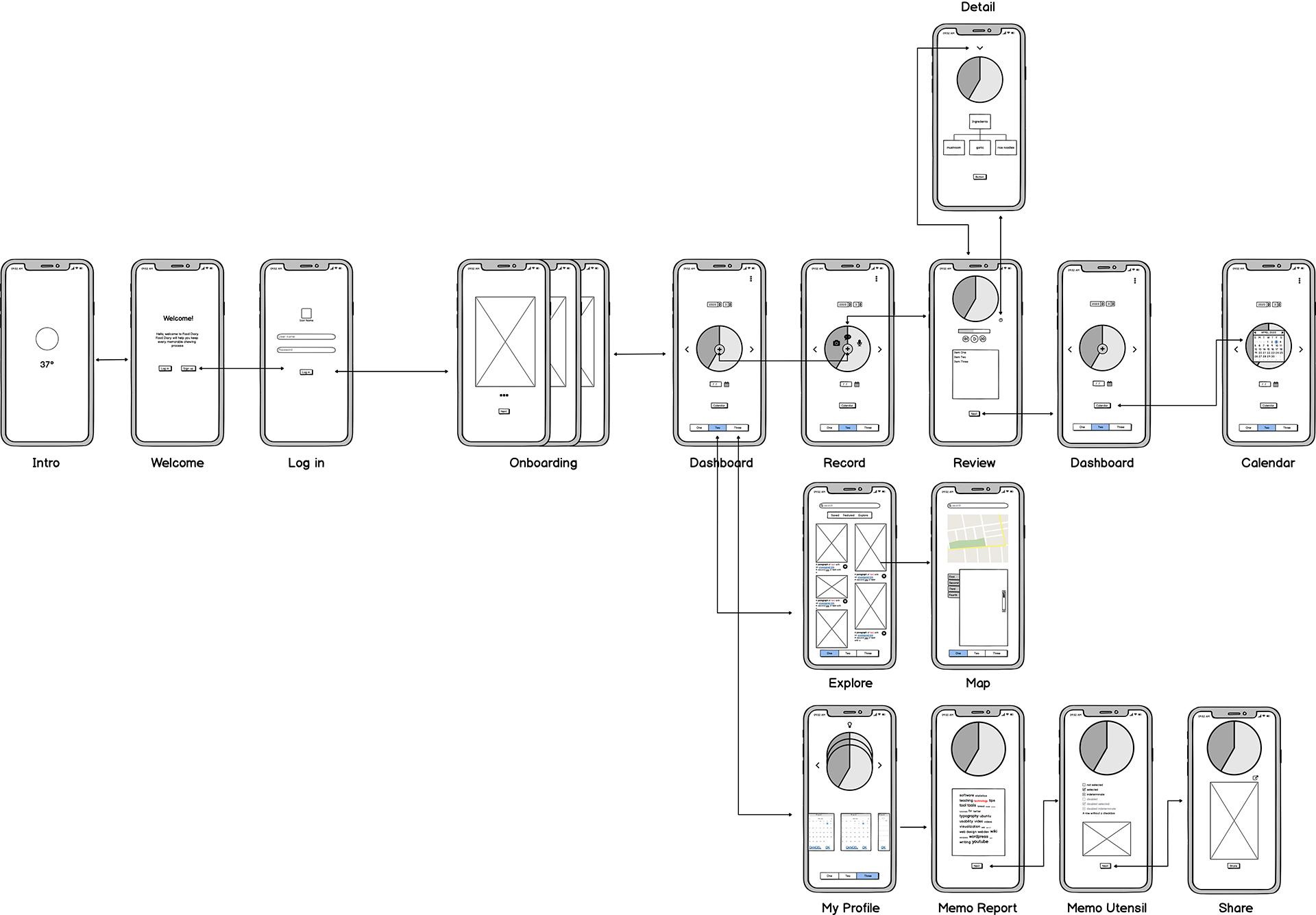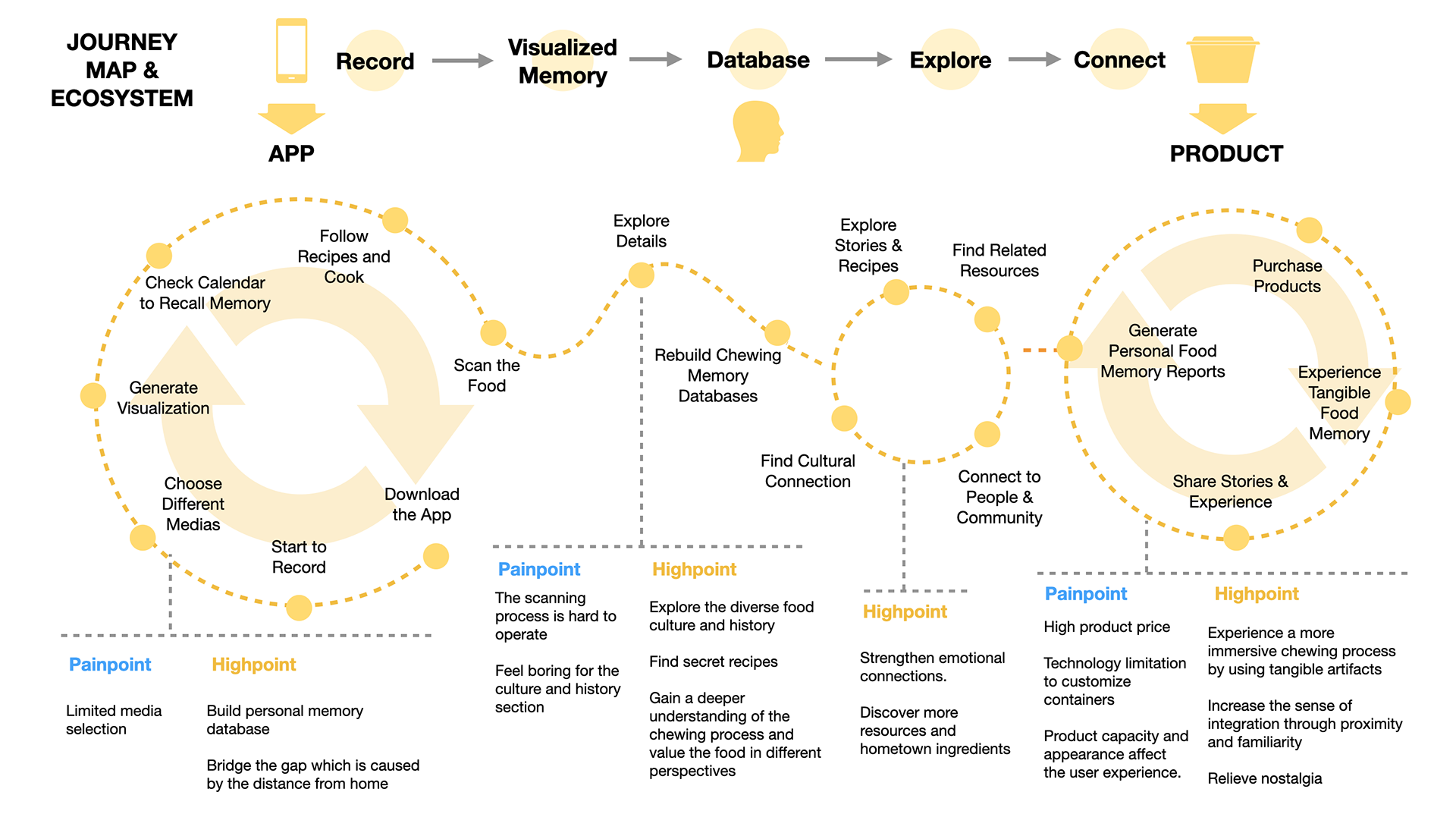37° Lab: Recording and Preserving Flavors from Home
37° Lab is a food memory database platform that records and preserves "chewing memories," bringing comfort to people who are living far from home by bridging the distance through sensory experiences. "Just one sip of miso soup brings me back to my grandma's couch," says first-year student and creator Baoqi Ding. "For me, food is an effective trigger of deeper memories containing feelings and emotions." The experience of living far away from home led Baoqi to explore how geographical structures define us and how we relate to them—prompting her to invent 37° Lab.
“The question became: How might we make people feel more at home when staying in an unfamiliar environment?”
For people living far away from home, the new geographical structure influences personal identity. Through her research, Baoqi found that the lack of connection with one's own culture often results in feelings of isolation and nostalgia. To better understand, she conducted interviews with people living far from home and received richly textured stories and insights. For Baoqi, the question became: How might we make people feel more at home when staying in an unfamiliar environment? What if we could bridge the physical gaps between people and their hometowns, by offering them in their new home with a digital hometown cookbook?
37° Lab consists of an app and collections of artifacts. The app provides the user with the opportunity to visualize their food memories and a variety of recording methods to facilitate the user in remembering their "chewing experiences" through different lenses. Based on the recording, the software algorithm will generate different patterns to preserve every touchable moment the user has experienced through food.
For solving the problem of not knowing where to buy specific hometown ingredients, Baoqi created a community section that allows users to listen to other peoples' stories and to explore different recipes, gaining access to authentic resources and hometown cuisine. Here’s how it works:
Powered by object scanning and identifying technology, the software also provides food stories and histories so that the user can better perceive and understand the food culture while recording. For a better touchable experience, all UI interfaces are interpreted in the neomorphic style. To better understand her process, let’s take a closer look at Baoqi’s wireframes and user journey map:
Baoqi decided to take 37° Lab past the digital space, and into the realm of tangible products. Using the users' food memories as input, she designed a series of vessels called "Memo Utensils." The features of the containers are extracted from users' most memorable food experiences. Baoqi explains, "the reason for combining the product and the app is to provide users with a perspective lens to cherish their food memory and feel more connected. Users can record and visualize memory in the app while touching and feeling the memory by using the containers."
“I came to the United States when I was in high school. Where I live now, there is no sea. That scallop soup instantly took me back to the summer days when my father and I went swimming together.” — David Lee
Inspired by her interviewees' personal narratives, Baoqi designed containers based on food experience stories. As she explains, "An experience involving wonder can be seen as a trigger for a kind of awareness, and abstract beauty can trigger the imagination." With this in mind, Baoqi decided to transform the taste, shape, color, and texture of the food to connect points between the food and the containers. Check out the gallery below to see how Baoqi translated two stories into the physical containers.
